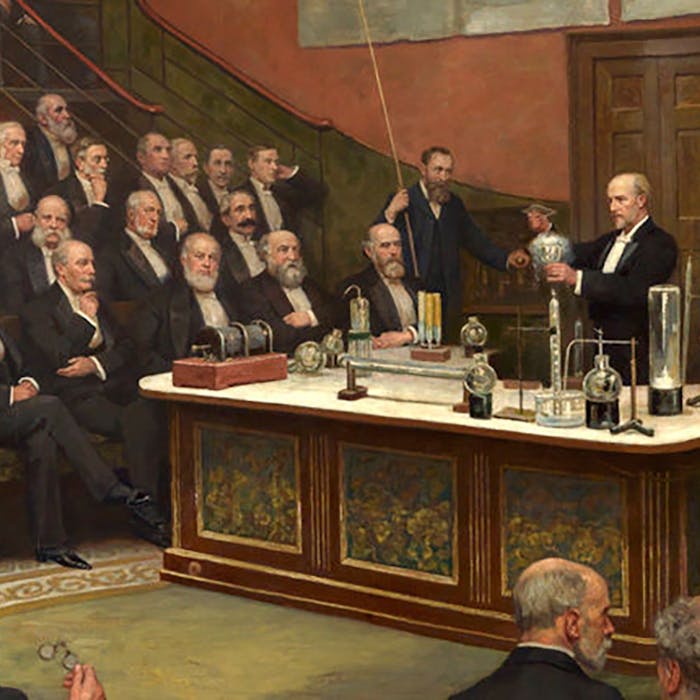
The Thermos Flask - filling a vacuum
Sir James Dewar, a Scottish chemist and physicist at Oxford University, invented the first vacuum flask in 1892, which became the accepted way to keep hot and cold liquids at their original temperatures. Though it was not Dewar, but the professional glass blower he hired to help him to make it, who patented the invention himself and named it 'thermos'.
Whilst carrying out experiments in the field of cryogenics (the behaviour of substances at low temperatures), Dewar identified a need to keep a chemical placed in a flask at a stable temperature. To do this, Dewar placed a glass bottle in another larger glass bottle, and evacuated the air between the two bottle walls. In doing so, he created a partial vacuum to keep the temperature of the contents stable. He demonstrated this to his fellow scientists.
Hiring a professional glass blower from Germany to make a sturdier flask led to the commercial manufacture of the 'Dewar Flask' in 1898.
Reinhold Burger, the glass blower, was the one to create a commercial model of the flask, named it 'thermos', and patented it – later selling it and the name to several American companies. The original Thermos business continues with an increasing range of modern versions of the invention, which are now in use in many homes, and particularly when needed to take hot or cold liquids with people on trips. Dewar did not profit from the widespread adoption of his vacuum flask – he lost a court case against Thermos concerning the patent for his invention.
While Dewar was recognised as the inventor, because he did not patent his invention before Burger, he was unable to stop Thermos from using the design.
Further reading
Links to external websites are not maintained by Bite Sized Britain. They are provided to give users access to additional information. Bite Sized Britain is not responsible for the content of these external websites.
